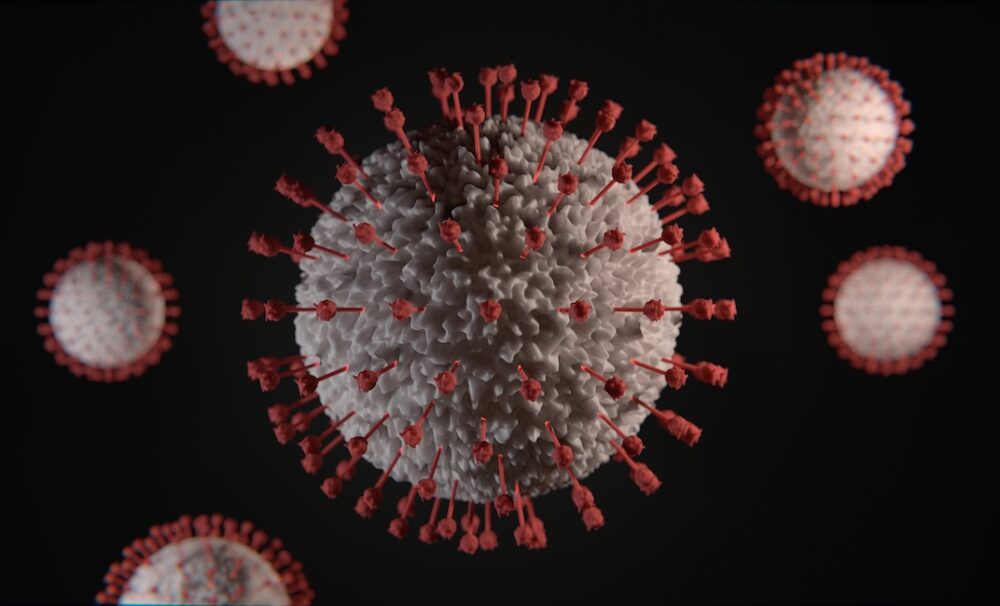Latest Research on Covid-19 Impacts in Healthcare Simulation
The Covid-19 pandemic has forced the medical simulation community to adapt in ways like never before. Upon the early days of the virus’ spread, healthcare simulation centers, institutions, and facilities needed to determine which alternatives, if any, could help them resume their ability to provide instruction and meet the needs of learners. Based on these solutions and outcomes, the healthcare simulation community was able to come together to create several best practices and establish effective virtual and digital methodologies. This HealthySimulation.com article shares the latest research on Covid-19 impacts on healthcare simulation in hopes that simulationists worldwide can use this information to improve upon their own practices.
Expanding on this topic, HealthySimulation.com put together an Impacts of COVID on Healthcare Simulation Global Survey that collected responses from over 100 simulationists worldwide. Of those surveyed, 10% said their labs had been closed for over a year following the pandemic, 14.6% said they were closed for 12 months or less, and 28.5% said they were closed for 6 months or less. Alternatively, 18.5% reported that their clinical simulation labs never closed and remained open throughout the pandemic.
Further, about half of respondents added that their simulation program used the pandemic closures as an opportunity to update or remodel their clinical simulation lab space. Yet, the majority of respondents agreed that their simulation program had significantly increased the ability to provide remote learning opportunities due to COVID. From these findings, the majority of respondents agreed that remote learning investments would continue at their respective institutions even after the COVID-19 pandemic ended.
Sponsored Content:
HealthySimulation.com Webinar: APRN Faculty and Advanced Nursing Simulation: Benchmarks and Barriers
During the COVID-19 pandemic, advanced practice nursing (APN) faculty were forced to integrate simulation into APN curricula at a higher rate than in previous years. Since then, there has been substantive development in guidelines for use of simulation in APN programs. There has also been increased advocacy for research on this subject. However, some hurdles still exist. This presentation provides an overview of the history of simulation in advanced practice nursing education, recent milestones in the area of simulation curriculum integration for APN educators as well as challenges that persist.
Healthcare Simulation Covid-19 Research
Lessons learned in preparing for and responding to the early stages of the COVID-19 pandemic: one simulation’s program experience adapting to the new normal: Use of simulation to ensure an organization is ready for significant events, like COVID-19 pandemic, has shifted from a “backburner” training tool to a “first choice” strategy for ensuring individual, team, and system readiness. In this report, researchers summarize their simulation program’s response during the COVID-19 pandemic, including the associated challenges and lessons learned. They also reflect on anticipated changes within their program as they adapt to a “new normal” following this pandemic.
Sponsored Content:
COVID-19 Critical Care Simulations: An International Cross-Sectional Survey: The goal of this research was to describe the utility and patterns of COVID-19 simulation scenarios across different international healthcare centers. Simulation centers team leaders and HCWs reported positive feedback on COVID-19 simulation sessions with multidisciplinary personnel involvement. These drills are a valuable tool for rehearsing safe dynamics on the frontline of COVID-19. More research on COVID-19 simulation outcomes is warranted; to explore variable factors for each country and healthcare system.
The use of simulation to prepare and improve responses to infectious disease outbreaks like COVID-19: practical tips and resources from Norway, Denmark, and the UK: In this paper, the researchers describe the potential of simulation to improve hospital responses to the COVID-19 crisis. They provide tools that can be used to analyze the current needs of the situation, explain how simulation can help to improve responses to the crisis, what the key issues are with integrating simulation into organizations, and what to focus on when conducting simulations. They also provide an overview of helpful resources and a collection of scenarios and support for center-based and in situ simulations.
COVID-19 pandemic preparation: using simulation for systems-based learning to prepare the largest healthcare workforce and system in Canada: Healthcare resources have been strained to previously unforeseeable limits as a result of the COVID-19 pandemic of 2020. This has prompted the emergence of critical just-in-time COVID-19 education, including rapid simulation preparedness, evaluation, and training across all healthcare sectors. The goal of this paper is to share the unique features and advantages of using a centralized provincial simulation response team, preparedness using learning and systems integration methods, and to share the highest risk and highest frequency outcomes from analyzing a mass volume of COVID-19 simulation data across the largest health authority in Canada.
Investigating effects of healthcare simulation on personal strengths and organizational impacts for healthcare workers during the COVID-19 pandemic: This cross-sectional study showed that COVID-19-specific healthcare simulation training programs, both in-situ and lab-based, enhanced personal strengths of HCWs, in terms of assertiveness, mental preparedness, self-efficacy, internal locus of control and internal locus of responsibility, to a large extent. Since there was lacking in the scientific investigation into relevant aspects of COVID-19, for the time being, we expand our discussion to clinical and organizational impacts and strategic management approaches aligned with evidence-based medicine.
Implementation of Simulation Training During the COVID-19 Pandemic: Simulation played a critical role in this New York City institution’s response to the COVID-19 pandemic. With the rapid influx of critically ill patients, resource limitations and presented safety concerns, simulation became a vital tool that provided solutions to the many challenges we faced. In this article, researchers describe how simulation training was deployed at the institution throughout the course of the pandemic, which included the period of a medical surge. According to the researchers, simulation helped refine protocols, facilitate practice changes, uncover safety gaps, and train redeployed healthcare workers in unfamiliar roles. They also discuss the obstacles encountered with implementing simulations during the pandemic, the measures they took to adapt to their limitations, and the simulation strategies and end products that were derived from these adaptations.
Impact of COVID-19 pandemic on APRN practice: Results from a national survey: The impact of the COVID-19 pandemic on Advanced Practice Registered Nurse (APRN) practice is not well known. This study aimed to describe state practice barriers and explore the effects of the COVID-19 pandemic on APRN practice. The descriptive study design used a 20-item web-based survey open from June 1 through September 23, 2020, and the findings can be used to advocate for policy changes to support APRN practice authority.
The state of distance healthcare simulation during the COVID-19 pandemic: The coronavirus pandemic continues to shake the embedded structures of traditional in-person education across all learning levels and across the globe. In healthcare simulation, the pandemic tested the innovative and technological capabilities of simulation programs, educators, operations staff, and administration. This study aimed to answer the question: What is the state of distance simulation practice in 2021? Ultimately, the study gives a perspective into the rapid adaptation of the healthcare simulation community towards distance teaching and learning in reaction to a radical and quick change in education conditions and the environment caused by COVID-19, as well as future directions to pursue understanding and support of distance simulation.
The impact of Covid-19 on simulation-based learning of gynecology and obstetrics skills: Limitations on training during the Covid-19 pandemic may have severely impacted the opportunity to learn basic clinical and surgical skills. A potential strategy for overcoming these limitations was offered by simulation activities, which allowed trainees to receive basic training in the discipline and prevented an additional “lockdown” of their learning and development of skills. According to this research, this type of simulation training will be of paramount importance, considering the paradigm shift caused by the Covid-19 pandemic in lifestyle and healthcare activities. This research explains why this is the case.
The Impact of Simulation-Based Education on Nurses’ Perceived Predeployment Anxiety During the COVID-19 Pandemic Within the Cultural Context of a Middle Eastern Country: This study reports on a joint education and workforce team COVID-19 quality improvement clinical preparedness initiative, developed and delivered by the State of Qatar’s major healthcare provider, Hamad Medical Corporation, in which SBE was implemented to prepare nurses and address anxieties prior to deployment to COVID-19 facilities. Overall, demographic data revealed that nurses who attended the SBE came from varying backgrounds and specialties.
CALMS: Modelling the long-term health and economic impact of Covid-19 using agent-based simulation: Researchers presented their agent-based CoronAvirus Lifelong Modelling and Simulation (CALMS) model that aspires to predict the lifelong impacts of Covid-19 on the health and economy of a population. According to the study, CALMS considers individual characteristics as well as comorbidities in calculating the risk of infection and severe disease. They conducted two sets of experiments aiming at demonstrating the validity and capabilities of CALMS, and ran simulations retrospectively and validate the model outputs against hospitalizations, ICU admissions, and fatalities in a UK population for the period between March and September 2020.
COVID-19 Critical Care Simulations: An International Cross-Sectional Survey: This is a cross-sectional, international survey for multiple simulation center team members, including team leaders and healthcare workers (HCWs), based on each center’s debriefing reports from 30 countries in all WHO regions. The main outcome measures were the COVID-19 simulation characteristics, facilitators, obstacles, and challenges encountered during the simulation sessions. In the end, simulation centers team leaders and HCWs reported positive feedback on COVID-19 simulation sessions with multidisciplinary personnel involvement.
Additional HealthySimulation.com Covid-19 Resources
HealthySimulation.com created a page to list all of the latest resources created by or in support of medical simulation programs providing education and training against the spread of COVID-19, aka the Coronavirus. It is absolutely crucial that every healthcare education and training program in the world immediately review these clinical simulation tools to combat the spread of the virus. From sim scenarios to research from the front lines in China to sim lab policy ideas to online learning courses — here is the latest simulation in healthcare tools to fight COVID-19.
Learn More About Healthcare Simulation Covid-19 Resources
Lance Baily, BA, EMT-B, is the Founder / CEO of HealthySimulation.com, which he started in 2010 while serving as the Director of the Nevada System of Higher Education’s Clinical Simulation Center of Las Vegas. Lance also founded SimGHOSTS.org, the world’s only non-profit organization dedicated to supporting professionals operating healthcare simulation technologies. His co-edited Book: “Comprehensive Healthcare Simulation: Operations, Technology, and Innovative Practice” is cited as a key source for professional certification in the industry. Lance’s background also includes serving as a Simulation Technology Specialist for the LA Community College District, EMS fire fighting, Hollywood movie production, rescue diving, and global travel. He and his wife live with their two brilliant daughters and one crazy dachshund in Las Vegas, Nevada.
Sponsored Content:


















